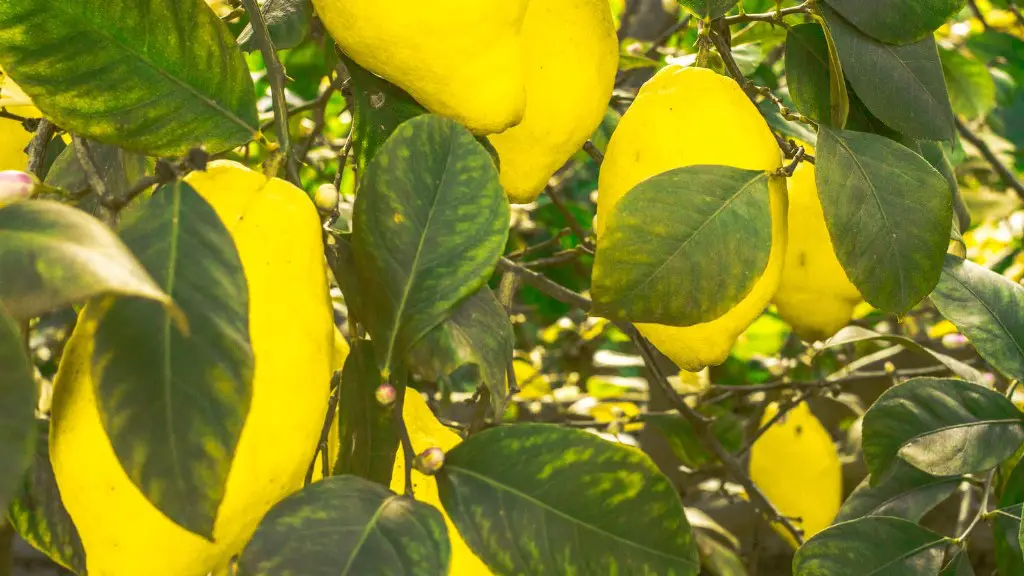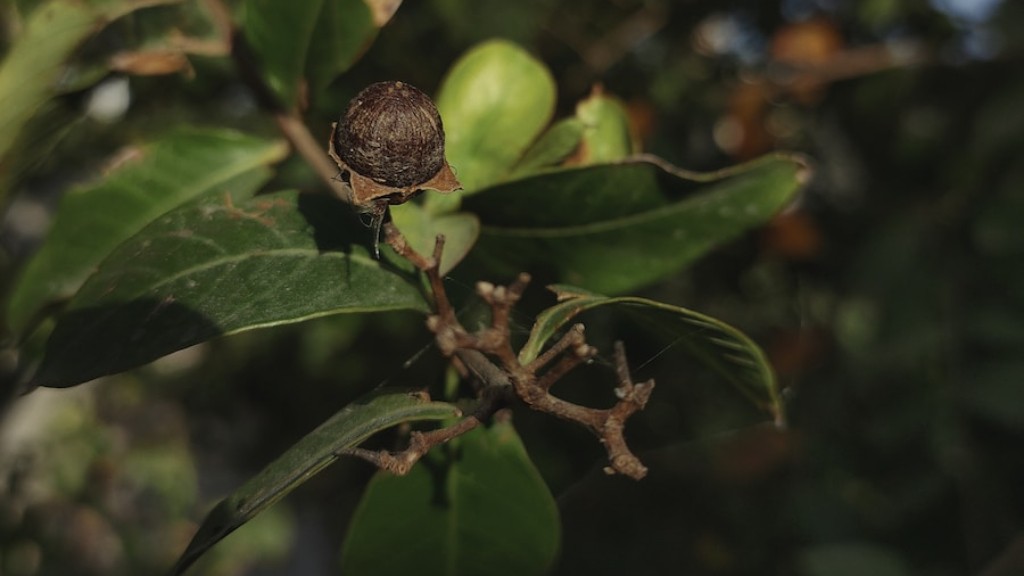Should you prune an apple tree? Absolutely! Pruning is a critical part of maintaining apple trees, and is necessary for it to remain healthy, productive, and attractive. Pruning an apple tree is not only beneficial for the tree itself, but for you as well. It ensures an orderly, clean-looking tree, encourages flowering and the growth of apples, and keeps your tree healthy for many years to come.
The best time to prune an apple tree is during the winter when it is dormant. This will help promote new growth and better flowering when the following growing season arrives; pruning during the late winter before buds begin to open allows you to shape the tree without ruining the flowering for the season. As a general rule, prune your apple tree where it naturally narrows to reduce the main leader, and reduce the size of branches gently.
In addition to pruning during winter, it is important to keep your apple tree pruned during the summer as well. During the summer when growth is most active, you can reduce the length of your newly developing branches. By regularly pruning during the summer months, it will help encourage flowering and fruit production. It is equally important to remove any broken, dead, or diseased branches as soon as you see them. The sooner you do this, the sooner the tree can fight off any potential problems.
When pruning your apple tree, remember to keep the canopies open. This will help ensure proper air circulation which will reduce the chances of any fungi or mildew growing. Additionally, it will allow your apples to get more sun, which will in turn help to increase the size, flavor and quality of your fruits. Be sure to use clean, sharp pruning tools to ensure a clean and precise cut.
Finally, another important tip when it comes to pruning apple trees is to ensure that you are not pruning too much. Removing too much can actually harm your tree and leave it feeling weakened or stressed. It is always best to prune lightly and gradually throughout its life.
Pruning For Disease Prevention
Pruning your apple tree not only helps to improve its shape and look, but it also helps to reduce the chances of disease. When you prune your apple tree, you can remove dead or damaged branches, reduce crowding and improve air circulation. All of these activities can help reduce the incidence of diseases by providing a healthier and more hospitable environment. Pruning can also help reduce the risk of pests and animals, thus reducing damage to your tree as well as the spread of diseases.
Furthermore, pruning your apple tree can also help ensure that the fruit it produces is perfect and of the best quality. Pruning will reduce the number and size of the apples produced, eliminating any that are scabby, small, misshapen and diseased. With fewer fruits on the tree, and a higher quality of fruits, you can ensure that your apples are the best they can be.
When pruning for disease prevention, it is important to remember to keep a balanced viewpoint. Balance between too much and too little pruning is key and too much pruning can actually lead to increased disease. Prune your apple tree in the most efficient way, with no large scale pruning, and your tree will abide for many years.
Finally, pruning an apple tree requires a commitment and dedication, both for the long-term and for the short-term, to keep it healthy. It is an important task that must be done regularly in order to ensure that your apple tree remains healthy and produces abundant fruit in the coming years. Pruning is definitely worth the effort and will keep your apple tree thriving for many years to come.
Preparing For Pruning
Before you begin pruning your apple tree, you should prepare the necessary tools and equipment. First, gather your pruning tools, such as pruning shears, a saw, and a ladder. Wear protective goggles, gloves, and clothing to keep yourself safe while working around the tree. Finally, make sure you have some old newspapers or a tarp, to put the prunings on.
Next, plan where you will begin pruning. Look for broken, diseased, or dead branches and begin by removing those first. You should also identify any branches that are rubbing against each other and prune them so that they stop touching. Always remember to prune your apple tree where it naturally narrows. This will allow you to reduce the size of branches without having to cut into the main stem.
When pruning your apple tree, be sure to prune for the future. This means that after pruning, the tree should be structurally sound, with a clear main leader, strong branching and foundations, and no major problems. Remember that you want the body of the tree to remain as strong as possible. Do not be afraid to prune heavily; as mentioned before, it is important to prune lightly and gradually over time.
Finally, when pruning your apple tree, always be sure to clean your pruning tools before and after use. This will help to prevent the spread of disease, and will ensure that your pruning job is as effective as possible. Cleaning your pruning tools will also help them last longer, as they are less likely to become dull or rust.
Caring For Your Apple Tree After Pruning
Once you have completed pruning your apple tree, it is important to take steps to ensure its continued health. First and foremost, you should water your tree regularly and adequately, as this will help prevent drought-related stress and drought-related issues. Additionally, adding a layer of mulch around the base of the tree will help to keep the soil around the tree moist, which in turn will help reduce water loss.
Another important step when caring for your apple tree is to regularly monitor the tree for signs of disease or insect infestations. Many pests, such as aphids, can be prevented with regular pruning, so be sure to keep an eye out for any infestations. If you see anything suspicious, take steps to treat the tree as soon as possible.
Finally, be sure to fertilize your apple tree regularly. In addition to ensuring that your tree receives the nutrients it needs for growth, it will also help promote stronger flowering and fruit production. Choose a fertilizer that is balanced in nitrogen, phosphorus, and potassium. This will give your tree the best chance of a successful season.
By following these simple steps, you can ensure that your apple tree remains healthy and fruitful for many years to come. Although it may be daunting to prune your apple tree at first, it will become easier with practice. With the right care and maintenance, your apple tree will remain healthy and productive for years to come.
Undertaking Professional Pruning
If you are uncertain about pruning your own apple tree, you can always enlist the help of a professional arborist. Professional arborists are experienced and skilled in pruning, and can help you transform your apple tree for the better. They will also be able to identify any potential issues that you may have overlooked.
A professional arborist will also be able to provide you with valuable advice on the best techniques and methods of pruning your tree, based on your individual needs. They will also be able to take into account the particular species of your apple tree, the climate, and the specific conditions of your garden. This will ensure that your pruning is done in the most efficient and effective way possible.
Finally, a professional arborist will ensure that the pruning job is done safely. They will take proper precautions and use the correct tools, equipment, and techniques to make sure that the pruning is safe and successful. This will help to reduce any potential risks associated with pruning, as well as reduce any potential damage to your apple tree.
In summary, pruning your apple tree is an essential part of maintaining its health, as well as ensuring an abundance of fruit each year. Although it may seem intimidating at first, there are many resources available to help you properly prune and maintain your apple tree. Whether you choose to do it yourself or enlist the help of a professional arborist, your apple tree will remain healthy and productive for years to come.



